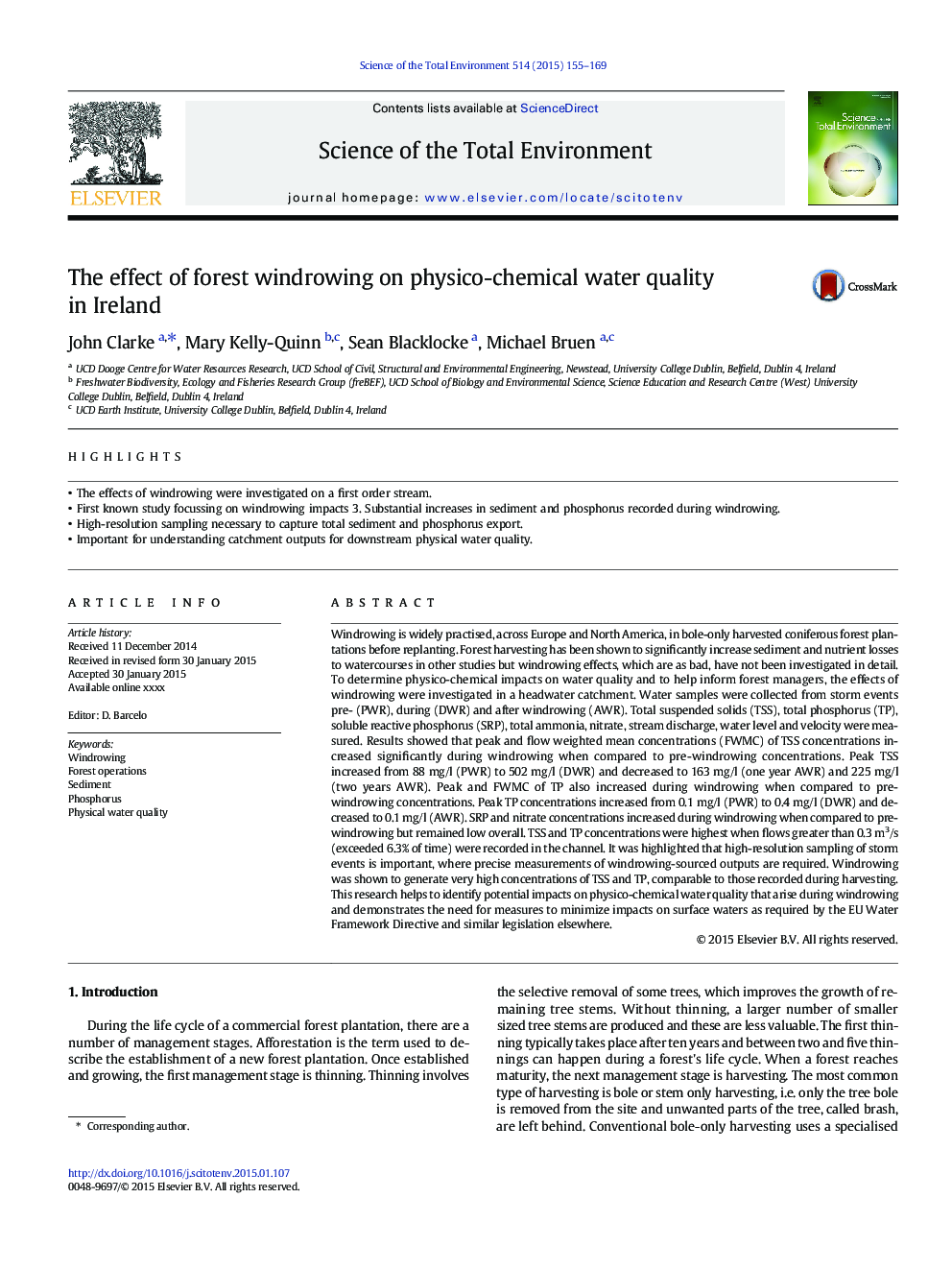| Article ID | Journal | Published Year | Pages | File Type |
|---|---|---|---|---|
| 6327029 | Science of The Total Environment | 2015 | 15 Pages |
Abstract
Windrowing is widely practised, across Europe and North America, in bole-only harvested coniferous forest plantations before replanting. Forest harvesting has been shown to significantly increase sediment and nutrient losses to watercourses in other studies but windrowing effects, which are as bad, have not been investigated in detail. To determine physico-chemical impacts on water quality and to help inform forest managers, the effects of windrowing were investigated in a headwater catchment. Water samples were collected from storm events pre- (PWR), during (DWR) and after windrowing (AWR). Total suspended solids (TSS), total phosphorus (TP), soluble reactive phosphorus (SRP), total ammonia, nitrate, stream discharge, water level and velocity were measured. Results showed that peak and flow weighted mean concentrations (FWMC) of TSS concentrations increased significantly during windrowing when compared to pre-windrowing concentrations. Peak TSS increased from 88Â mg/l (PWR) to 502Â mg/l (DWR) and decreased to 163Â mg/l (one year AWR) and 225Â mg/l (two years AWR). Peak and FWMC of TP also increased during windrowing when compared to pre-windrowing concentrations. Peak TP concentrations increased from 0.1Â mg/l (PWR) to 0.4Â mg/l (DWR) and decreased to 0.1Â mg/l (AWR). SRP and nitrate concentrations increased during windrowing when compared to pre-windrowing but remained low overall. TSS and TP concentrations were highest when flows greater than 0.3Â m3/s (exceeded 6.3% of time) were recorded in the channel. It was highlighted that high-resolution sampling of storm events is important, where precise measurements of windrowing-sourced outputs are required. Windrowing was shown to generate very high concentrations of TSS and TP, comparable to those recorded during harvesting. This research helps to identify potential impacts on physico-chemical water quality that arise during windrowing and demonstrates the need for measures to minimize impacts on surface waters as required by the EU Water Framework Directive and similar legislation elsewhere.
Related Topics
Life Sciences
Environmental Science
Environmental Chemistry
Authors
John Clarke, Mary Kelly-Quinn, Sean Blacklocke, Michael Bruen,
